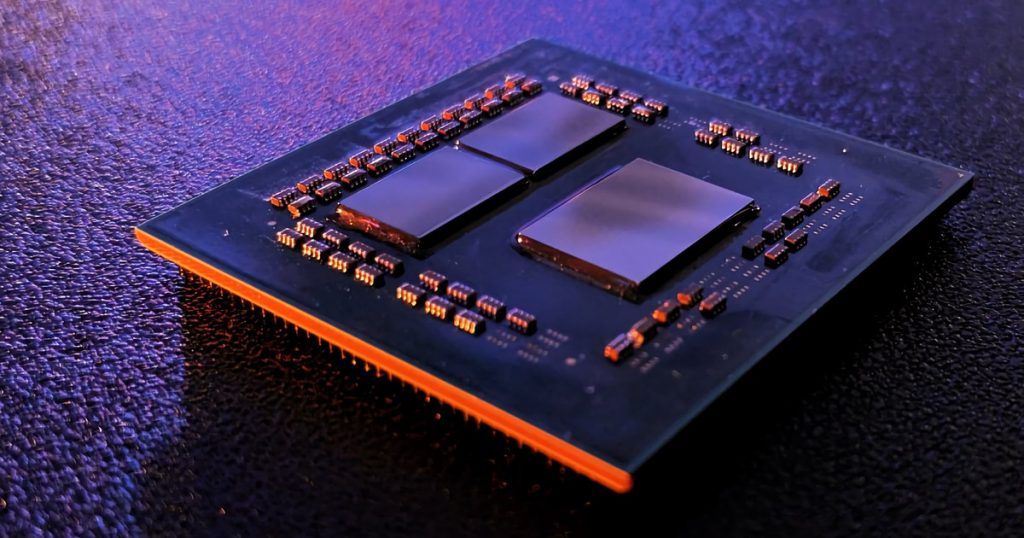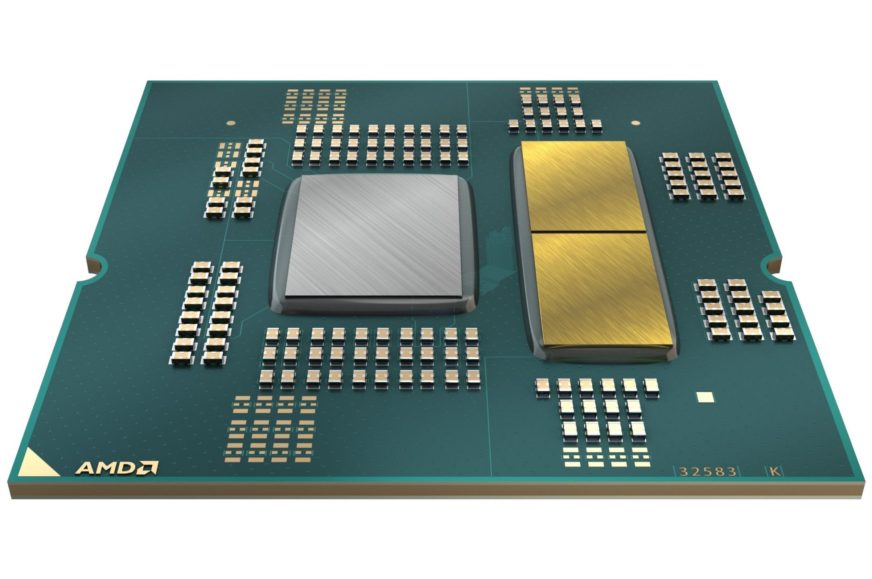Medusa: Zen 6 + RDNA 5 with more advanced chiplet technology
So far, little information has emerged about what to expect from AMD Ryzen processors with the Zen 6 architecture. The core itself should be an evolution of Zen 5, given AMD’s model resembling “tick-tock”, where even-numbered cores are less aggressive enhancements of tech introduced in odd-numbered ground-up redesigns. But it looks like everything else in the SoC could be a radical shift from the aging concept of Ryzen processor uncores.
For now, we’re still waiting for Zen 5 to be released, which should happen this year with desktop processors in the second half of the year, server processors around the end of the year, and mobile ones in the second half of the year or maybe around the year end. But now we are getting various rumours about Zen 5’s successor. On Twitter, the Olrak29_ / Everest account let it be known that Ryzen (“client”, not server) processors with Zen 5 cores will already use integrated GPUs with RDNA 5 architecture, on which AMD’s next high-end graphics cards are to be based.
According to this, AMD’s integrated graphics will altogether skip the RDNA 4 architecture, on which is expected to power new mainstream graphics cards that are hopefully coming in the second half of this year. RDNA 4 is said to lack high-end GPU models, which would only be introduced as part of the RDNA 5 generation. This is starting to resemble a similar situation with the Polaris GPU in 2016 and Vega in 2017.
Read more: Radeons RX 8000 said to be mainstream only, RDNA 4 without high-end
Zen 5-based Ryzen laptop APUs (Strix Point and Sarlak or Strix Halo APUs) will not yet have the RDNA 4 GPU architecture, still using RDNA 3.5, which is supposed to be a hybrid of RDNA 3 with some RDNA 4 features. It looks like there may be no APU or processor using RDNA 4 in the end, and AMD will then skip straight to RDNA 5 in processors with Zen 6 cores. The Zen 6 products with RDNA 5 based iGPU are reportedly codenamed Medusa.
Read more: Ryzen 8000 Strix Point is 4+8 big.LITTLE, but Sarlak 16× Zen 5
Revolution the design of AMD’s APUs and desktop processors?
But Medusa could be quite an interesting processor family not only because of the integrated graphics. It’s not clear from current reports whether we’re talking about APUs like the Ryzen 8000G “Hawk Point” (this is more likely) or what we more traditionally call CPUs – i.e., the Ryzen 7000 “Raphael” chiplet processors, although these have also started to include basic small integrated GPUs.
There are vague rumors on the internet that this APU / CPU distinction might disappear with Zen 6 and that Ryzen processors for PCs will get a new form, which in the case of Medusa processors could possibly bridge both of these segments.
According to Olrak29_, Medusa will be a chiplet processor, i.e. made up of multiple pieces of silicon with different functions. But it will no longer use the relatively primitive interconnect where these chiplets are simply mounted side by side on a classic processor substrate through which all inter-die communication travels. Medusa is supposed to use the so-called 2.5D packaging, which means either using silicon interposer or silicon bridges (such as the EMIB used in Intel’s Sapphire Rapids server processors, but AMD also uses a similar technology in compute GPUs, for example).

If the signal is conducted through silicon instead of a conventional substrate, better power efficiency should be achieved. Communication between chiplets should achieve higher bandwidth and potentially better latencies as well. In particular, however, it should not have as much overhead in the form of extra power consumption. This could reduce the idle power consumption of high-performance desktop processors. Current Ryzen chiplet CPUs using plain substrate wiring for the inter-die communication seem to have a certain power “overhead”: the Ryzen 3000, 5000 and 7000 are thus very efficient under full multi-threaded load, but ironically not very efficient while idling.
From the various rumors that have been popping up all over Twitter and technical forums, but which unfortunately lack some specific source they could be traced to (so take this with a particularly large grain of salt), it looks like this 2.5D chiplet design will not only apply to desktop processors (i.e. the chiplet lineage of high-performance CPUs), but also to APUs, for which this would be a big change. This is because until now they have been using purely monolithic die design, which gives advantages in power efficiency, idle power and battery life. Medusa could thus be a primarily mobile processor similar to the chiplet-based Meteor Lake from Intel.
Tip: Intel unveils Meteor Lake processors: 4nm, tiles, Xe LPG graphics
According to these rumors, this would at the same time distance desktop processors from server processors. Indeed, from the Ryzen 1000 to the incoming Zen 5 based generation 9000, the desktop (with the exception of APU models) has been derived from server silicon. The 1000 and 2000 generations directly used the same die, with the server processor being essentially a 4S configuration of these chips in a single MCM package. Generations 3000 to 7000 and the future 9000 based on Zen 5 also use CPU chiplets (CCDs) designed for servers, but have their own IO chiplet designed for the AM4 or AM5 desktop platform.

But according to these internet whispers of unclear origin, Zen 6 desktop processors will abandon this concept. Server CPU chiplets will no longer be reused in desktop. It’s not entirely clear what will replace the old concept, though. It’s possible that the entire desktop sector will be covered by processors based of silico that will be primarily aimed at laptops (which are a bigger market than desktop PCs today, anyway). We don’t know exactly what this will look like. Theoretically, there could be, for example, a basic mobile SoC design to which not just one but optionally two CPU chiplets could be attached, thus covering the mainstream laptop market as well as the high-performance gaming laptop and desktop market.
This year’s upcoming desktop Ryzen 9000 (and mobile Ryzen 9000) processors with Zen 5 architecture will be a continuation of the recipes used so far – in the mobile area, but especially in the desktop AM5 platform. The desktop Ryzen 9000 will have the same IO dies as the Ryzen 7000 processors and thus the same DDR5 memory controller, the same PCIe 5.0 controller and also the same Infinity Fabric interconnect between CPU chiplets. Only the architecture of the CPU cores will be changed.
By contrast, the next generation of processors could ironically be a much bigger bombshell. Their Zen 6 cores will be a relatively minor advancement over Zen 5, although leaked AMD slides are signalling that there will be decent IPC increases – it could probably change in a similar fashion as between Zen 1 and 2 or Zen 3 and 4. But the new chiplet design with a redesigned SoC uncore, new connectivity and new memory controller could have a more profound impact in many applications, like games.
It will be interesting to see what this will do to gaming performance and multi-threaded performance, whether the AM5 socket will be abandoned due to the changes, or perhaps if memory interface will be widened. One pipe dream could be a hypothetical AM6 platform that uses 256-bit LPDDR5X interface with LPCAMM2 memory modules, but that probably won’t come true…
Tip: Revolution in RAM: CAMM2 memory modules are coming to desktop
Source: VideoCardz, Olrak29_
English translation and edit by Jozef Dudáš
⠀











